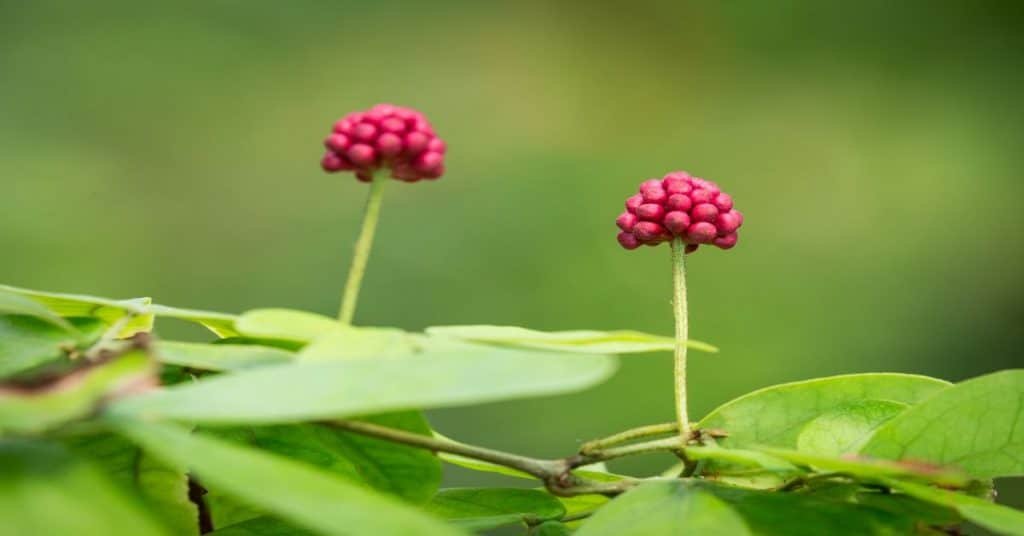Powder puff flowers, also known as Calliandra haematocephala, are stunning flowering plants that can add beauty and vibrancy to any garden or landscape. If you’re looking to propagate these magnificent flowers and create a flourishing display, you’ve come to the right place.
In this guide, we will provide you with detailed instructions on how to successfully propagate powder puff flowers and ensure their healthy growth. Let’s dive in!

Table of Contents
Understanding Powder Puff Flowers
Before we delve into the propagation process, it’s essential to familiarize ourselves with the characteristics and requirements of powder puff flowers. These gorgeous plants are native to South America and belong to the Fabaceae family. They are renowned for their stunning red or pink puffy flowers, which resemble powder puffs and attract various pollinators like bees and butterflies.
Powder puff flowers thrive in warm climates and require full sun exposure to bloom abundantly. They prefer well-drained soil and need regular watering to keep their roots hydrated. With the right care and propagation techniques, you can expand your powder puff flower collection and enjoy its captivating beauty throughout your garden.
Propagation Methods
1. Seed Propagation
One of the most common methods to propagate powder puff flowers is through seeds. Here’s a step-by-step guide to help you with the seed propagation process:
- Seed Collection: Collect mature seeds from existing powder puff flowers. Look for fully developed seed pods, which are usually brown and dry. Carefully remove the seeds from the pods and place them in a container.
- Seed Treatment: Before sowing the seeds, it’s beneficial to scarify them gently. This process involves lightly scratching or nicking the seed coat to enhance germination. You can use a small file or sandpaper to scarify the seeds.
- Sowing the Seeds: Fill a seed tray or pots with a well-drained seed-starting mix. Moisten the soil lightly and sow the scarified seeds on the surface. Cover them with a thin layer of soil and mist with water to keep them moist.
- Germination and Transplantation: Place the seed tray or pots in a warm and well-lit area, preferably with temperatures around 70-75°F (21-24°C). Keep the soil consistently moist but not soggy. Germination usually takes around 2-4 weeks. Once the seedlings have developed their second set of true leaves, carefully transplant them into individual pots or a suitable outdoor location.
2. Cutting Propagation
Another effective way to propagate powder puff flowers is through cuttings. Follow these steps to propagate your plants through this method:
- Selecting the Cuttings: Choose healthy and non-flowering stems from a mature powder puff plant. The stems should be around 4-6 inches long and have several sets of leaves.
- Preparing the Cuttings: Trim off the lower leaves, leaving only a few sets at the top. Dip the cut end of the stem into a rooting hormone powder to encourage root development.
- Planting the Cuttings: Fill a small pot with a well-draining rooting medium such as perlite or vermiculite. Make a hole in the medium and gently insert the prepared cutting. Firm the medium around the stem to ensure stability.
- Rooting and Transplantation: Place the pot in a warm and humid environment with bright, indirect light. Mist the cutting regularly to maintain humidity and prevent wilting. After 6-8 weeks, roots should start forming. Once the roots are well-developed, carefully transplant the cutting into a larger pot or an appropriate outdoor location.
Caring for Propagated Powder Puff Flowers
Once you have successfully propagated your powder puff flowers, it’s crucial to provide them with the care they need to thrive. Here are some essential care tips:
- Watering: Keep the soil consistently moist but avoid overwatering, as it can lead to root rot. Water the plants deeply when the top inch of the soil feels dry.
- Fertilization: Feed your powder puff flowers with a balanced, water-soluble fertilizer every 2-4 weeks during the growing season. Follow the manufacturer’s instructions for application rates.
- Pruning: Regularly prune your plants to maintain their shape and promote bushier growth. Remove any dead or damaged branches to enhance overall plant health.
- Pest and Disease Control: Monitor your powder puff flowers for common pests like aphids, whiteflies, or spider mites. Treat infestations promptly using organic insecticides or insecticidal soaps. Also, be vigilant against fungal diseases by providing adequate air circulation and avoiding excessive moisture on the leaves.
By following these care guidelines and propagation techniques, you can enjoy an abundance of beautiful powder puff flowers in your garden.

Gardening is my passion and growing plants indoors has always been a stress relief for me. Grow a banana tree in my apartment once (although failed to produce bananas).






